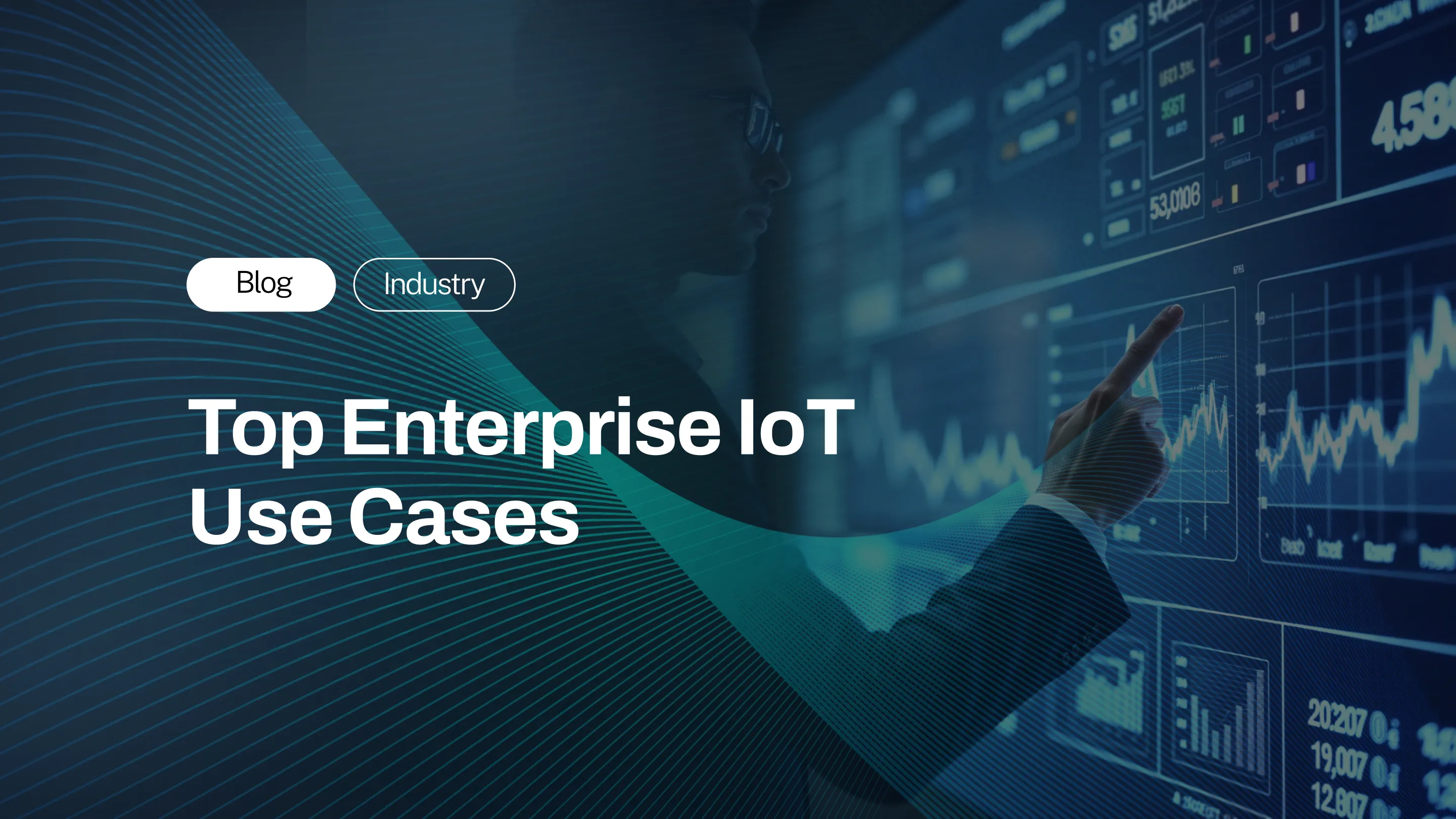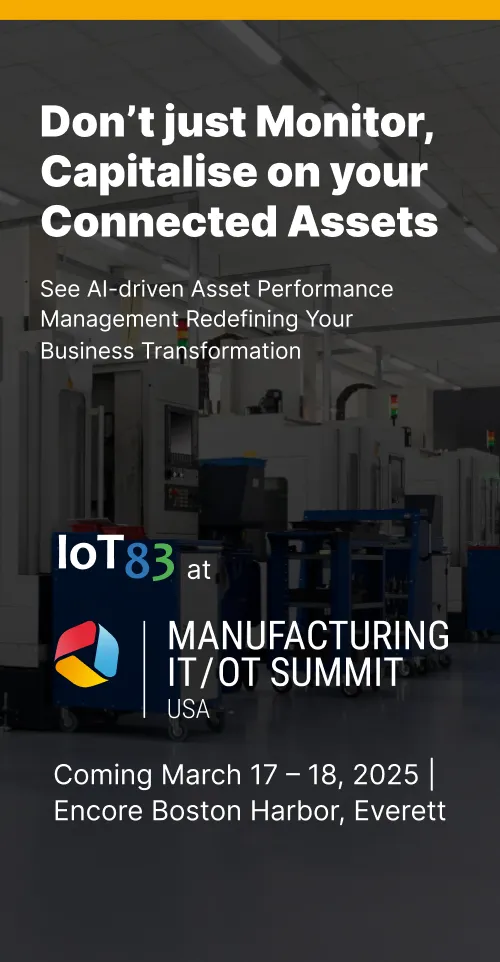When GE coined the term “Industrial Internet” a decade ago, it sounded like a futuristic idea: machines talking to each other, producing streams of data, and helping humans make smarter decisions. Fast forward to today, and Industrial IoT (IIoT) is no longer futuristic. It’s embedded in how manufacturers, energy providers, logistics firms, and even healthcare systems operate.
Yet, for many industrial OEMs and enterprises, scaling IoT beyond pilots is still a challenge. The irony? The very thing that promises efficiency and growth—data—often becomes the bottleneck.
So where are companies actually finding value? Let’s unpack the real enterprise IoT use cases, the obstacles along the way, and why the right AIoT platform makes all the difference.
Importance of Enterprise IoT for Industrial OEMs and Enterprises
If we believe the analysts, they say the global IoT market at over $875 billion by 2025, with industrial applications taking a lion’s share. But the Industrial enterprises have understood that growth isn’t just about sensors or devices or not even just about getting the data from different systems—it’s about outcomes. It’s about how you maximize the value of the data, move from proactive to predictive measures, and how you envision your business different from your competitors.
For the modern OEMs and Enterprises, the shift is clear:
- They want to move from selling products to selling outcomes
- They need to move from reactive fixes to predictive maintenance
- They will shift from fragmented systems to connected platforms
In industries like manufacturing, this evolution is critical. Falling behind in IoT adoption means ceding market share to competitors who can offer smarter, data-driven services.
4 Enterprise IoT Use Cases for Industrial OEMs
Knowing the importance and use cases of enterprise IoT can help industrial OEMs and enterprises can integrate it into future investment decisions. That is why we set out to create the most comprehensive list of IoT use cases in the manufacturing industry. Here's a list highlighting the unique features:
1. The Enhancement of Product Performance and Efficiency
With enterprise IoT technology, businesses get the power to significantly enhance product performance and efficiency by embedding sensors and smart components into products. It allows real-time data collection and analysis, enabling predictive maintenance to foresee potential issues before they occur, minimizing downtime. Also, enterprise IoT can optimize product usage and energy consumption, leading to more sustainable and efficient operations. For example, in manufacturing, IoT devices can monitor equipment conditions, optimize the maintenance schedule, and reduce energy consumption by adjusting operations based on real-time demand.
2. Operations Optimization and Increase in Revenue Streams
Businesses can achieve greater operational efficiency by automating routine tasks and optimizing resource allocation with enterprise IoT devices. Industrial OEMs can lead to significant cost savings and increased productivity with IoT optimization, making the most out of the insights collected through IoT applications. They can leverage new revenue streams by enabling the business model transition such as equipment-as-a-service.
For instance, an OEM could use IoT edge-data to offer personalized services or subscriptions based on usage patterns, creating a more tailored and valuable offering for customers.
3. Creating a Significant Competitive Edge and Value Chain Elevations
The enterprise IoT technology can provide OEMs with a competitive advantage by enhancing the value they deliver to customers. Through the detailed insights gained from IoT data, OEMs and enterprises can improve their supply chain management, reduce downtimes, and enhance customer satisfaction with better product quality and service. This elevation of the value chain not only strengthens a company's position in the market but also sets new standards for competitors.
4. Automation and Intelligence
Enterprise IoT facilitates a seamless flow of information across different layers of an organizational structure, incorporating Information Technology (IT), Operational Technology (OT), and Business Technology (BT). It enables automated decision-making and intelligent operations to identify patterns with data analytics and machine learning algorithms, predict outcomes, and suggest optimal actions. Such a level of automation and intelligence can significantly improve efficiency, productivity, and agility.
What it Takes to Make it Happen
Enterprise IoT has a position as a transformative force with its ability to enhance product performance, optimize operations, gain a competitive edge, and integrate IT/OT/BT. Industrial OEMs can choose an AIoT platform to overcome all the obstacles on their way to successful business transformation. This can help them gain a competitive edge to elevate and extend their value chain across multiple industry verticals.
However, the journey to Industrial IoT adoption has its challenges like uncontrolled development costs, operational risks, time to market, integration complexity, vendor dependency, and product life cycle management. This requires careful planning for short-term and strategic long-term success.
Here, an AIoT comes as the best alternative with buy and build approach, providing a platform for rapid development of industrial IoT smart applications to establish a reliable system for a more efficient, productive, and sustainable business. Industrial OEMs can kick start their transformation journey from day one.
Conclusion
Enterprise IoT use cases span across manufacturing industry verticals, demonstrating the transformative power of IoT technology in driving efficiency, enhancing productivity, and fostering new-age innovations. It is revolutionizing traditional business models and operational processes to optimize operations, creating newer revenue streams, and improving customer experience by leveraging real-time data analytics, automation, and connectivity.
However, it requires a capable enterprise domain cloud to overcome challenges like data security, mesh network demands, and latency issues for enabling worry-free business transformation.
Hence, enterprise IoT is the innovation to power the future of business operations, underlining the importance of strategic implementation and continuous innovation.
Would you like to discuss it further?






%20(1).jpg)



